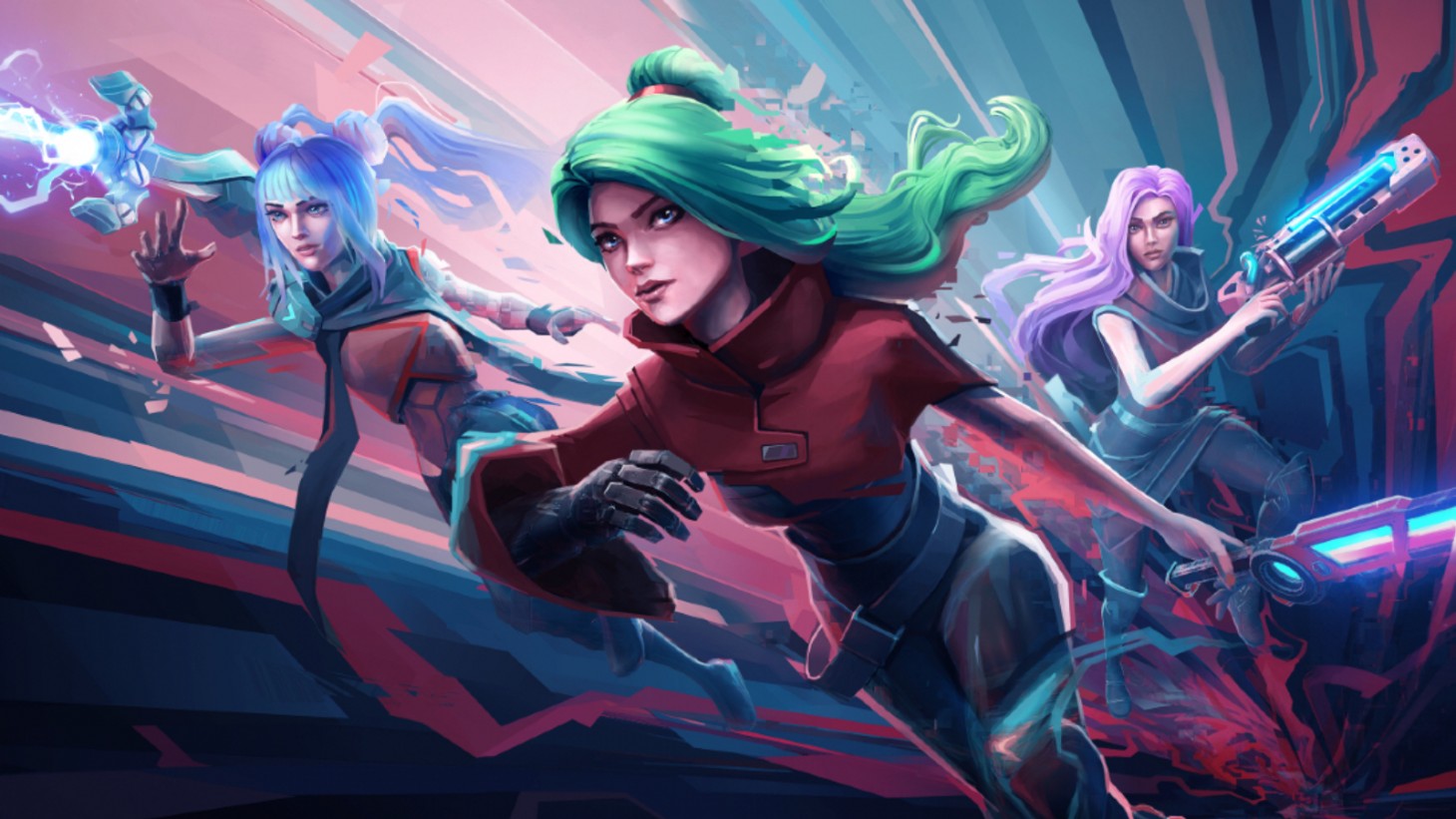There was a time when I would shun a roguelike/lite. Don’t ask why, but my brain would just file them under “not interested” and move on. But thanks to Hades, with its narrative-focused approach to die-and-try again, I’m now intrigued when something new comes along, this time in the form of Trinity Fusion.
A 2D rogue-lite, with a nice little tri-character switching/fusion mechanic (hence the name), Trinity Fusion is the latest in the dog pile. A slick, fast-paced and stylish platforming roguelike, it’s full of that grind and repeat gameplay that we can’t get enough of. With laser swords and electronic music, just to hook me in.
So, is it going up alongside Hades in my personal favourites, or should Trinity Fusion be kept apart? Let’s find out.

We Are Not The Same
There was a time when reviewing a rogue-type game, the story would be secondary to most things. Normally presented with an end goal, it used to be a case of “Does it matter? Just go throw yourself at this proverbial wall repeatedly”. Thankfully, we’re at a stage now where it’s nice to know what we’re aiming for, whilst launching at the proverbial wall.
Trinity Fusion, therefore, does have a means to its end, one that’s worth persuing. However, you’ll have to forgive me trying to recount it and not simply copy-pasting it, because there’s a lot to take in. It’s not as deep as The Matrix is (or we thought it initially was), but there’s a fair bit going on. Unless you’re a Coheed and Cambria fan, then it might be easier to get one’s head around.
Anyway, there’s multiple worlds and dimensions. Bound by a designated Prime world, each parallel has suffered its own hubris. The robot-slave world has seen a mechanical uprising, the basically-fantasy-elves Ewer think they’re superior, and humans are revolting. Against slavery, I mean.
Yes, that’s as broad a stroke as taping five paintbrushes together, but I’m not going to give whole thing away, am I? What I will clear up is how three identical-looking women from separate dimensions end up being fused together to save the world(s).
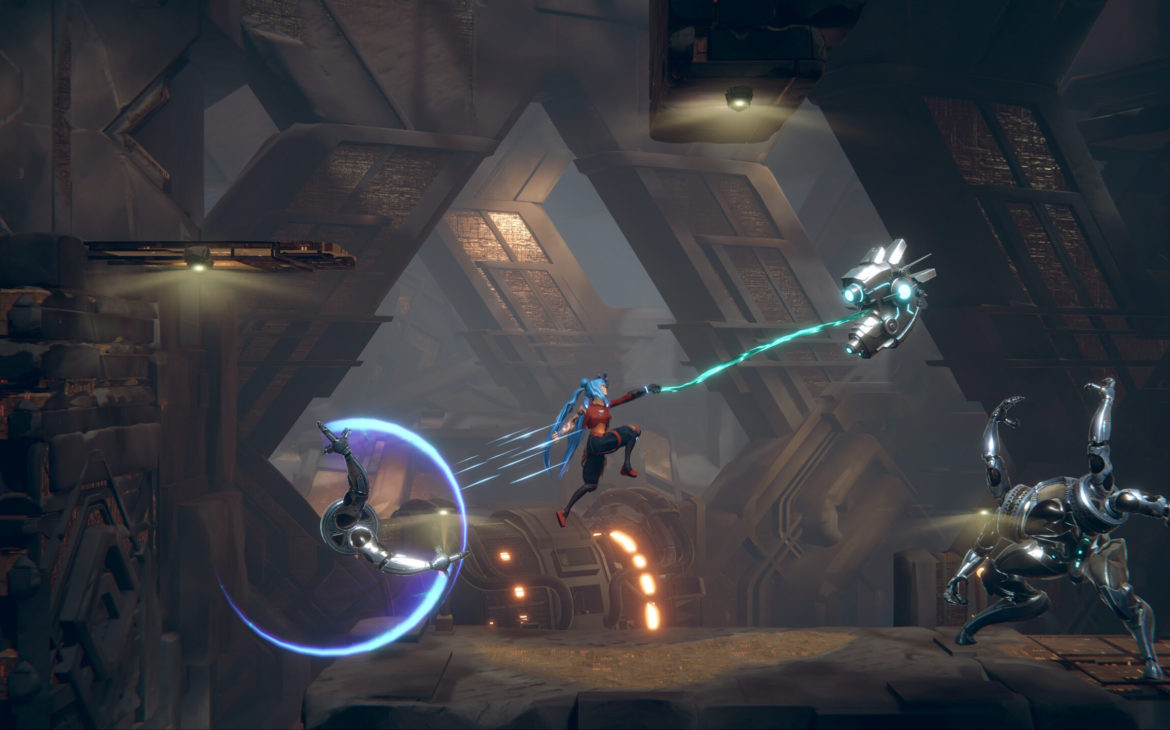
Same But Different
More often than not with the rogue genre, players are given one character, or template, and will build a style around that. Trinity Fusion is, in that regard, very similar and allows players to choose their build on each run (we’ll get onto permanent stats and whatnot later). Yet there’s a nice spin on proceedings that hooked me.
For whilst you may start as Altara, the “default”, trying out boons and perks as you go, it’s not long before things get interesting. You see, Altara’s not alone in the multiverse. After progressing so far, players will unlock Kera, and then eventually Naira. What difference does this make, despite essentially being a palette swap of Altara?
Well, each character has a unique perk. Altara can glide and has a multi-purpose drone, Kera a grappling hook, whilst Naira can use firearms. So, to start with, it seems like a bit of variety in the player character, no biggie. But then it gets interesting…
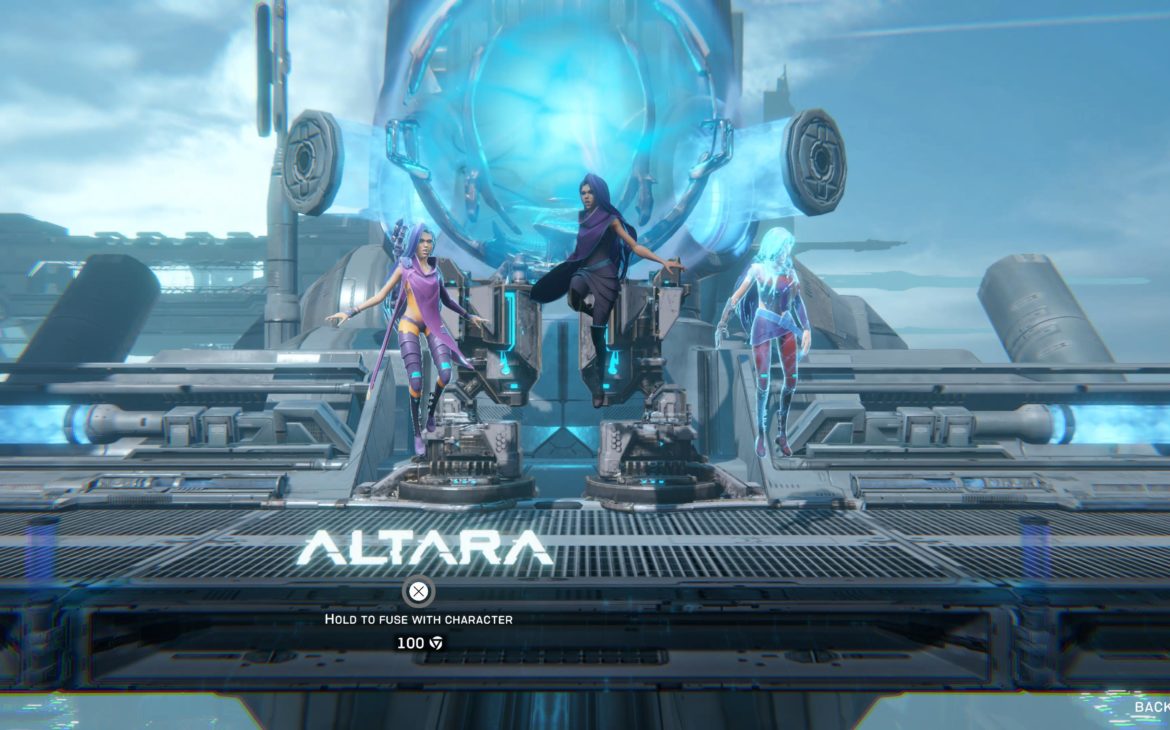
When Three Become One
Firstly, let’s talk perks. If one has played a rogue, it’s all standard fare. For those that haven’t, we’re talking about perks/bonuses that improve the odds when fighting for your life. Things like increased damage at the expense of taking more damage, critical chance and status effect percentage gains, and so forth. These are nothing new, but it felt prudent to discuss them anyway for newcomers. The joy is in finding out combinations that work for you.
No, the neat mechanic in Trinity Fusion is… well, fusion. As one progresses, in both story and repeated runs, there’ll come certain points where a new “perk” is unlocked. For a nominal fee, players can fuse the personality of another heroine into their current one. What does this mean, in practice?
Say you start as Kera, all heavy secondary weapons and grappling hook. But she has no double jump, like Altara does. So, fuse with Altara, and you’ll have the double jump, grappling hook and Altara’s little drone to switch up with. Or, you fancy Altara’s glide ability with Naira’s use of guns, and you get the gist.
The possibilities are… actually quite limited, in that regard, but combine that with the other perks you can pick, and there’s some versatility in gameplay.
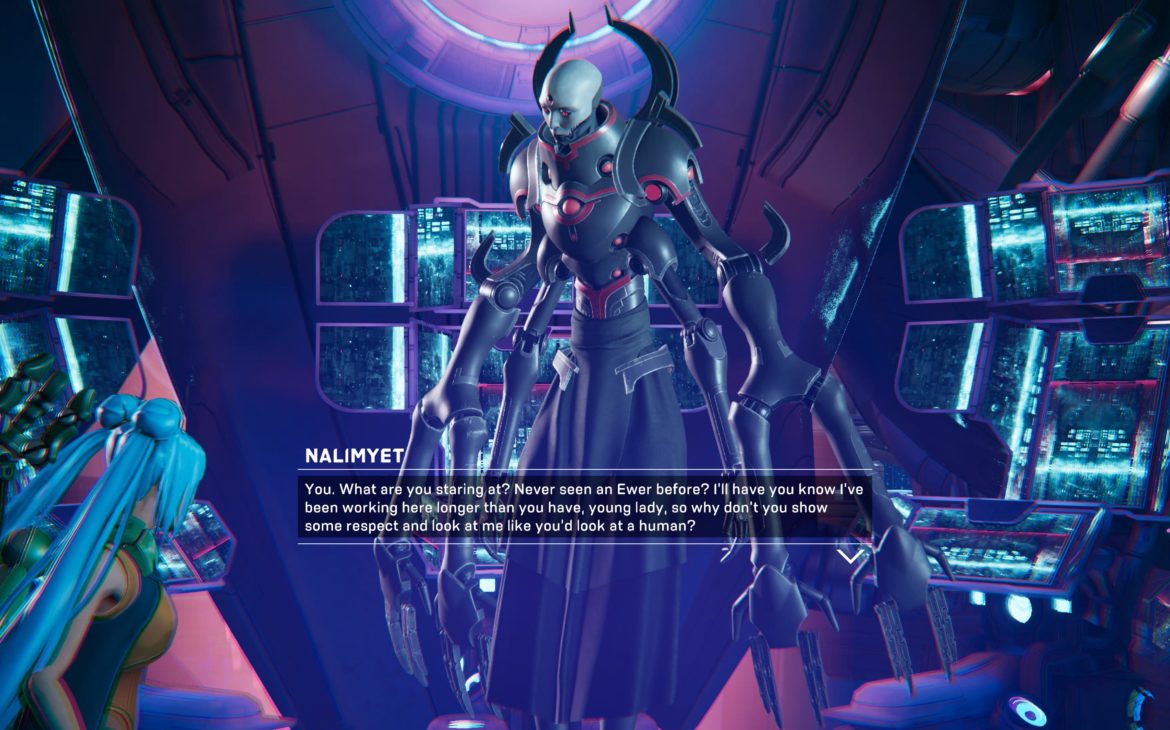
The Future Is Electric
Now, I suppose I should really mention how Trinity Fusion looks, alongside its unique mechanics and such. Rogues and souls are becoming a homogenised blur over time, so what stands out here? Is it the same drab ruins-to-futuristic approach we see everywhere?
You might be surprised to hear that yes, it is. But again, it’s all down to who players start their run with. Altara begins in the badlands, as it were. Kera in a forge somewhat further on, whilst Naira is somewhat akin to a late game starter in a factory. But a futuristic factory, obviously.
But whilst that may sound like Naira’s path is a shortcut, there’s a nice little take on proceedings here too. For you see, each “main” character players pick has their own arc. In each one, there’s a certain plot device (that I’m not spoiling) to get to, each with unique bosses. So this both encourages replayability in the normal rogue sense, as well as branching paths to culminate in a tied-up climax.
Or at least I’m assuming it does. There’s a pair of double-hard bastard snake things that are my white whale, if you will.
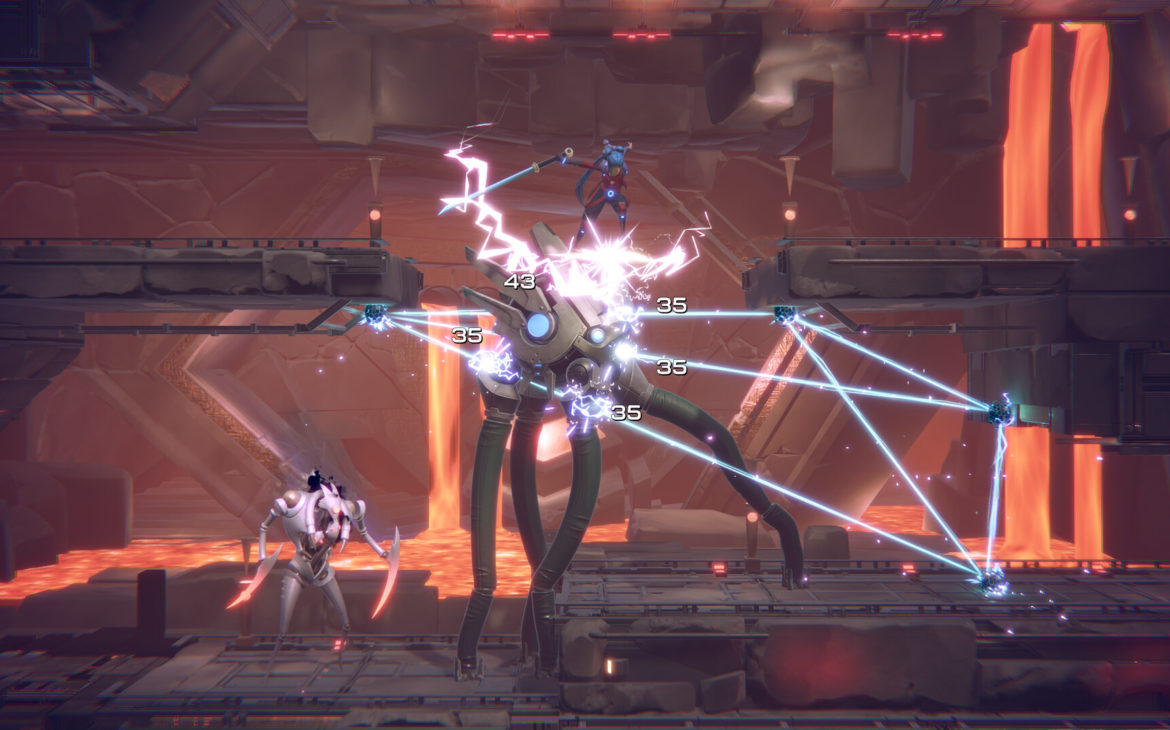
Banging Tunes And Neon Tubes
Finally, because some people really do need to know these things, we’ll talk about the graphical fidelity, frame rate and such. God knows how some used to enjoy those CRT days and 16bit relics…
Anyway, Trinity Fusion does look good, in as much as an indie rogue-like can. It’s smooth, fast and full of wooshy effects with all the weaponry. Even at its most frantic with enemies on screen, there was never any screen tearing or lag on the reviewed PlayStation 5 version.
The only disconnect I had were that, despite the varied voice acting on show, the character’s mouths don’t move. Yes, it’s a nitpick, but it felt like watching early Gerry Anderson puppet screen tests.
Other than that, Trinity Fusion has no major issues that threw me out of the game, both metaphorically and literally.
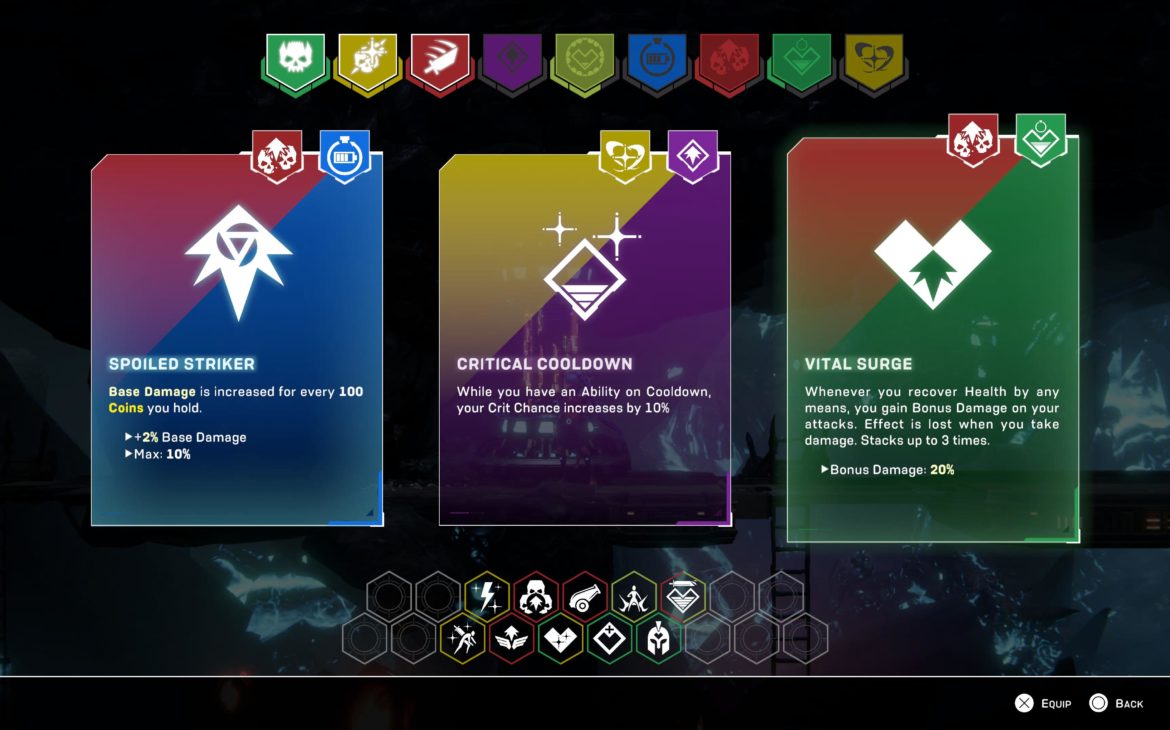
Keep On Tri-ing
Now, what separates rogue-lites from their “like” cousins is the implementation of permanent and temporary buffs, if you will. Trinity Fusion is no different, offering players the chance to build and develop their base stats, making them stronger for each run (in theory).
The former falls under the heading of psychic amplifiers, and a cybernetics implants store. Psychic amps are direct character upgrades, offering more health and a single use resurrection perk, for example. The cost/threshold on these starts small, but can be upgraded with certain tokens found in levels. So, the more you explore, the more can be acquired and spent.
The cybernetics are more varied, rather than completely direct. There’s situation-based ones, like weapon shops before a boss room, or character-specific moves. Atara has a teleport drone, which can be upgraded to do damage on traversal, or similar effects. In broad terms, we’re not looking at massively different builds per player. Rather more a selection of stepping stones to customise as you start getting better at the game.
The others, the temporary kind shown in the picture above, are again similar to those found in Dead Cells or Hades. You pick one you like, and you roll with it. Do you want more health at the expense of less-effective healing items, or do twice as much damage at the cost of taking as much? Half the fun is finding out, so I won’t say that there’s any “right” way to play.
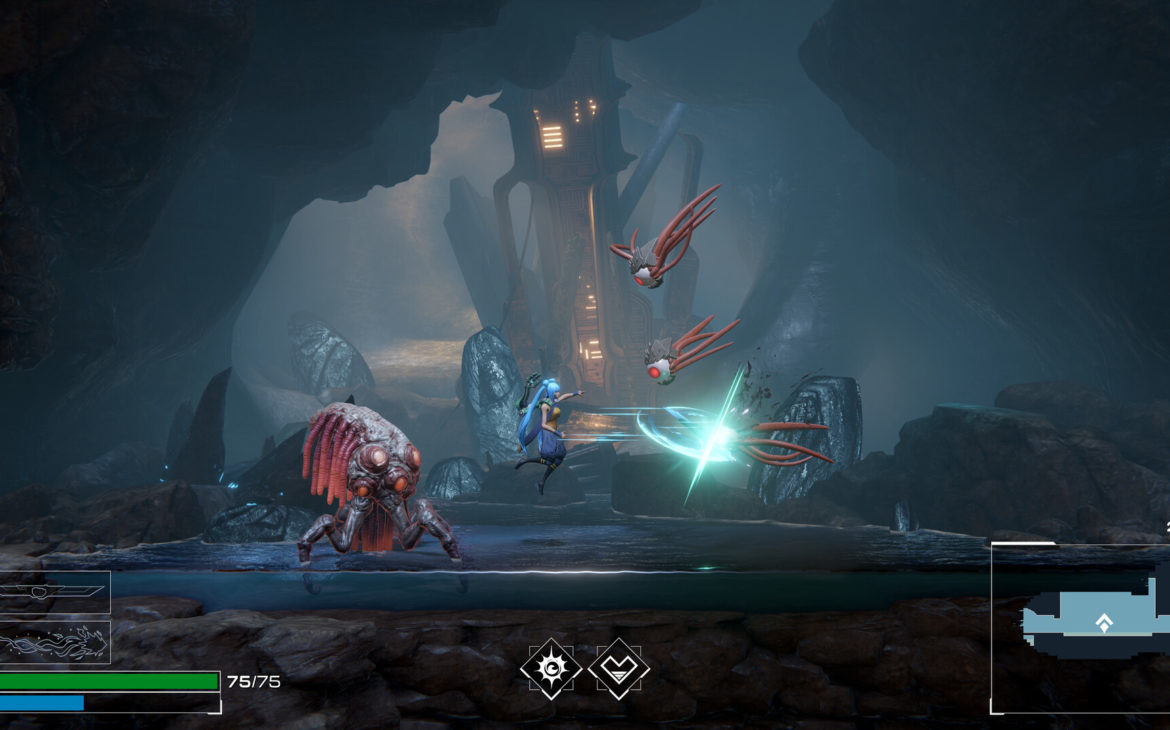
You Portal Here Often?
In terms of gripes with Trinity Fusion, I can’t say that I found many to complain about. Ventriloquism aside, the graphics and tunes all work well across its varied locales. I had perhaps a few clipping issues where a platform wasn’t solid, but it doesn’t outright kill you (unless you’re on low health).
I suppose the only niggle would be the enemy variety, or lack of. Given that we’re talking multiverse-levels of worlds here, it’s a bit off seeing the same reskinned enemy types rather than new varieties across each zone. Conversely, the boss designs are pretty varied, from early comic bosses, big robots and one that wouldn’t look out of place in Nier: Automata.
But other than that, Trinity Fusion runs well and has enough things to worry about in a run than what colour an enemy’s pauldrons are.
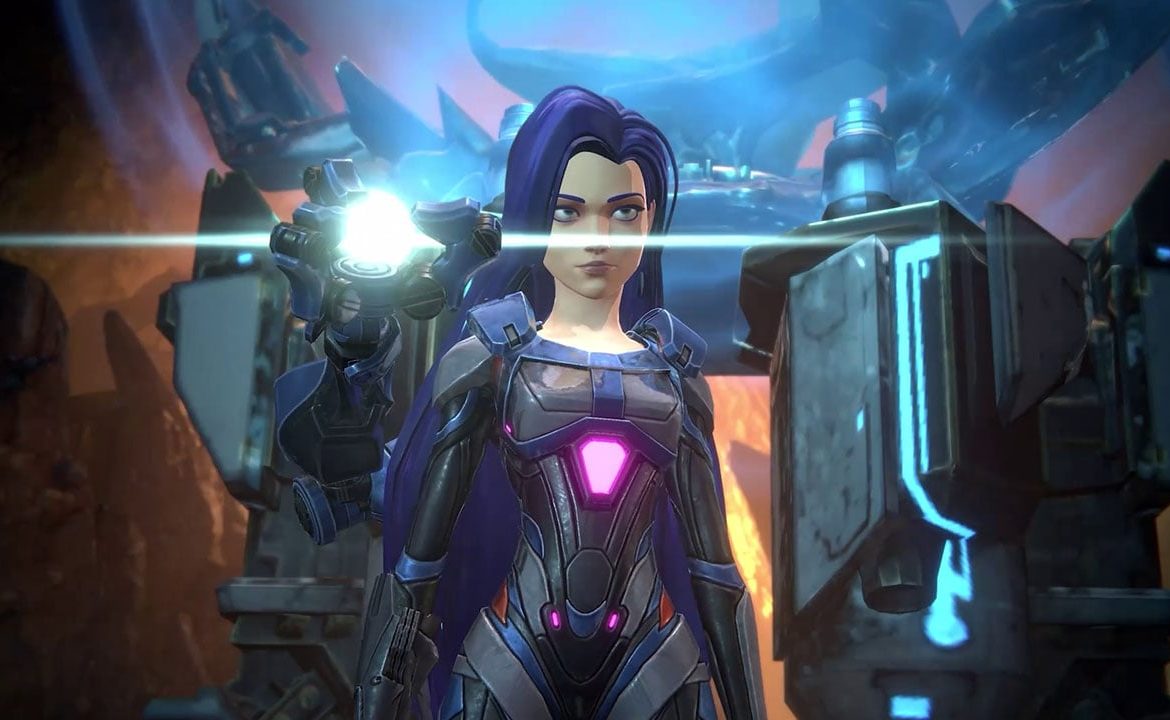
Tri Harder
To conclude, Trinity Fusion hits all of the sweet spots that put it akin to Dead Cells. It looks good, it handles well and the customisation between runs is varied enough to be enjoyable. What it excels over DC is in its narrative, with a compelling enough reason to keep banging one’s head against a wall.
Granted, I haven’t seen it through yet, but “yet” is a key word there. That it makes me want to see it through after my review period time with it is only a good sign, as it should be to you. Will I have taken out that earlier shite of a boss before this gets published? No, probably not, but I’m looking optimistic about my next wall-banging session.
In brief, Trinity Fusion has all the hallmarks of a great rogue-like, and given that it’s still in its early release days, Angry Mob Games can only go futher with supporting it.
Another rogue-like to add to the mix, Trinity Fusion may be a rose by any other name. It doesn’t do anything new, per se, but that it can go toe to toe without needing to is a good sign in itself. Let the future sounds and visuals take you in, but be warned: it’s a toughie.

Trinity Fusion is available now on PlayStation 4 & 5 (reviewed on latter), Xbox One and Series S|X, Nintendo Switch and PC via Steam.
Developer: Angry Mob Games
Publisher: Angry Mob Games
Disclaimer: In order to complete this review, we were provided with a promotional copy of the game. For our full review policy, please go here.
If you enjoyed this article or any more of our content, please consider our Patreon.
Make sure to follow Finger Guns on our social channels –Twitter, Facebook, Twitch, Spotify or Apple Podcasts – to keep up to date on our news, reviews and features.
